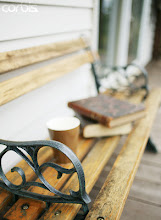Voter turnouts for primaries 'a concern' - USATODAY.com
By Kathy Kiely, USA TODAY
WASHINGTON — The red-hot race in Texas earlier this month between Gov. Rick Perry and Sen. Kay Bailey Hutchison for the Republican gubernatorial nomination helped drive the state to its biggest primary turnout in 20 years.
And just how many people showed up for the election?
About 1.5 million Texans cast ballots in the March 2 GOP primary for governor, according to the secretary of State's office. That means only about 1 in 10 of the 15.3 million Texans 18 and older who were eligible to vote actually cast a ballot, according to Curtis Gans at American University's Center for the Study of the American Electorate.
Since 1962, the percentage of eligible voters picking Democratic and Republican nominees for governor and U.S. Senate has been declining to less than 10% per party. The percentages are even lower for U.S. House and state legislature primaries, Gans says.
"It's a concern," Trey Grayson, Kentucky's secretary of State and the president of the National Association of Secretaries of State, said of the low voter participation in primaries.
Grayson and his counterparts, who serve as the top election officials in most states, are planning to launch a public-private partnership later this year to increase both voter registration and participation. Grayson says advertisers are joining with state voting officials to target the nation's youngest voters, those ages 18-25.
The extra effort to turn out voters could be necessary in some states this year. A new federal law to ensure that ballots cast by members of the U.S. military get counted requires states to provide a 45-day period for absentee voting. That's forcing some states that normally hold primaries in September to move them to August — when many families are on vacation and turnout could be even lower than usual.
"Typically, you go to the state fair, get the students back to school and then you have the primary elections and sprint to the end," says Mark Ritchie, secretary of State in Minnesota, which moved its Sept. 14 primary to Aug. 10. He's worried that his state's voter-turnout figures, generally among the nation's highest, will drop.
On the West Coast, there's a movement underway to trash the traditional primary system and replace it with a model that would virtually eliminate political parties' role in selecting nominees.
In California, state Sen. Abel Maldonado is leading a campaign to end party primaries and replace them with a free-for-all that would allow voters to choose from candidates of any party. The top two finishers would compete in the general election, even if they were both from the same party. Louisiana and Washington already have this in place.
"A closed primary system brings out the most hyper-partisan members of the Republican and Democratic parties," says Maldonado, a Republican.
An initiative that would force the change is on the ballot in the state's June 8 primary. It's backed by outgoing Republican Gov. Arnold Schwarzenegger but opposed by the California Democratic and Republican parties.
In Washington state, Secretary of State Sam Reed says fellow Republicans termed him "a traitor to the party" when he pushed successfully to establish a "top-two" primary system. "To be nominated by the Democratic Party, you have to go hard left and to be nominated by Republicans you have to go hard right," he said. "When you are campaigning to a larger electorate, you don't get locked in."
Reed said the first Washington primary under the new system in August 2008 managed to draw about 43% of registered voters to the polls, despite the lack of a U.S. Senate or governor's race. That bucked a national trend: Gans says states that held 2008 primaries on a different day from presidential primary contests had their lowest turnout ever.
State Rep. Reuven Carlyle, a Democrat elected to the Washington state House under the new primary system, said it "made a profound difference" in his overwhelmingly Democratic district. The district's Republicans were "a major force" in the primary, Carlyle said. "I think it pulls the parties to the center."
A ripple effect on national politics is possible. Michael McDonald, a political scientist at George Mason University, believes the partisan nature of most primaries for local office has had an impact. "There's a recruitment chain," McDonald says. "If you're punishing moderates in the farm leagues, they're never going to make it to the big leagues."
Not everyone agrees that changing the primary system will draw voters and centrist candidates. A study by the non-partisan Public Policy Institute of California concludes that the proposed new primary system would only have "a noticeable but modest effect."
Still, even a modest increase in primary voters might be welcome. As Doug Lewis of The Election Center, an association of state election directors, puts it: "We spend a lot of money to conduct an election that not a whole lot of people show up for."
| |||||||


No comments:
Post a Comment